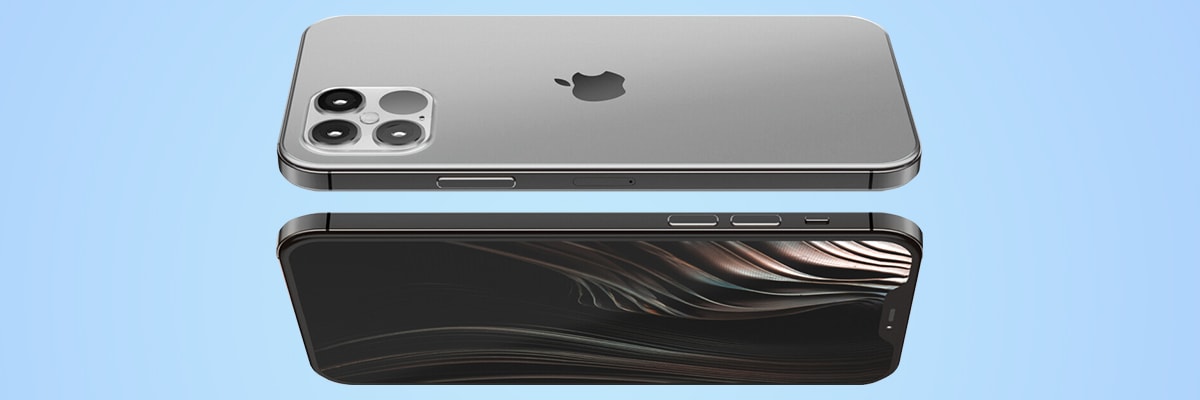
Return navigate_next
A Tough Choice: iPhone 12 or Samsung Galaxy Note20 5G
September 18, 2020 *
With so many choices out there in the market for smartphones, each with its technological advantages and feature sets, how can anyone decide what to buy? Part of that answer is determined by what you’re already familiar with. For example, if you’re a die-hard Apple follower, there won’t be any real head-scratching over choosing an iPhone 12 rather than a Samsung Galaxy Note20. On the other hand, if you’re accustomed to the swipes, the features, and the ecosystem surrounding Android phones, the Note20 is a top choice. So, with that caveat in mind, let’s study the differences between the two phones.
The fall season, second only to the Consumer Electronics Show (CES), is when Apple, Samsung, and other phone makers stage big events to announce their newest products. Perhaps their unspoken goal each fall is to be crowned “the best” in their category. In the smartphone category, many agree that the iPhone 12 running iOS and the Galaxy Note20 running Android are the two “best in category” smartphones. Here’s why.

Samsung’s Galaxy Note20 5G
The Note20 5G and Note20 Ultra 5G, despite their price tags ($999.99 and $1,299.99 respectively), are widely noted as the most versatile big-screen smartphones in the market. They have a dynamic 6.9-inch, 120Hz display and an ultra-smooth S-pen stylus performance (with a 9 mS response). Additionally, its ability to stream Xbox games, its powerful 50x zoom camera, and exceptional battery life, the Note20 is a winner in anyone’s book.
For those people worried about buying today’s technology, only to be blindsided when Samsung releases their next smartphone model, Samsung offers special financing and a buy-back offer. It covers up to 50% of the retail price when you return your phone in good condition after 20 months — by which time Samsung will probably have a brand new Galaxy Note product. That buy-back offer could be worth $650.00 after returning your Samsung, Apple, or Google phone.
The Galaxy Note20 works on 5G frequency spectrums to deliver download performance similar to a fiber optic connection. Both the Note20 5G and Note20 Ultra 5G have large screens (6.7- and 6.9-inches, respectively), making the Note20 5G a good choice for gamers. Additionally, using the S-Pen, to create PowerPoints, digital artwork, or to take hand-written notes.

iPhone 12
The newest “flagship” phone from Apple, the iPhone 12 uses the remarkable A14 Bionic system on a chip. It contains six CPU cores, a fast GPU, a neural engine, and machine learning components all contained on the A14 system on a chip. Benchmark testing shows the A14 Bionic CPU runs 40% faster while the GPU clocks in at 50% faster than the Bionic A13 chip used on the earlier iPhone 11.
Like the Samsung entry, the iPhone 12 runs on 5G networks to bring users all the benefits of this latest technology. Its three visible light cameras plus an infrared LiDAR camera position the iPhone 12 well for augmented reality apps once they’re developed. Both Apple and Samsung use machine learning that controls various phone operations to conserve battery life and to provide the snappiest response to user actions.
In short, the iPhone 12 is Apple’s most advanced smartphone and should please even the most critical user.
Summary
Here’s a comparison of the primary specifications people usually consider when buying a smartphone.
| Specification | Samsung Note20 | Apple iPhone 12 |
|---|---|---|
| Battery Life | 10 hrs 26 min | Unknown |
| Cameras | 108MP wide (ƒ/1.8), 12MP telephoto with 5x optical zoom (ƒ/3.0), 12MP ultrawide (ƒ/2.2) | 12MP Ultra-Wide: (ƒ/2.4 ), 12MP Wide: (ƒ/1.8), 12 MP Telephoto: (ƒ/2.0), LiDAR camera |
| RAM | 8GB or 12 GB for Ultra model | 6GB |
| Storage | 128 GB or 512 GB for Ultra model | 64GB, 128GB or 256GB |
These manufacturer websites offer more detailed information for those who want to drill down further.
Protecting Your Investment
Accidental damage to an expensive smartphone is every owner’s worry. If you’ve never dropped your smartphone, take a look at this drop test video that shows the damage Samsung’s Note20 and Apple’s iPhone suffer from numerous drops. Not only should you buy a suitable protective, but it also pays to consider a service contract like Upsie. It protects your phone from drops and other risks the manufacturers’ warranties do not cover.
Upsie.com provides a comprehensive service subscription (often referred to as an extended warranty) that costs far less than other extended plans. Upsie plans cover a cracked screen, liquid damage, battery failure, power failures, mechanical failure, Wi-Fi/audio/Bluetooth failures, RAM failure, screen failure - virtually anything that can happen. Check out Upsie's smartphone subscriptions and learn about warranties from both vendors as well as Google and OnePlus.
Finally, keep in mind that you can buy Upsie protection for any smartphone in good working condition (as long as it is sold in the US). In addition, Upsie has an industry-low cracked screen deductible of $0.
Upsie will repair your phone at an authorized repair center (even Genius Bar for iPhones). Or you can ship your phone to Upsie's certified repair center. In the rare event your phone cannot be repaired, Upsie coverage includes a full replacement.
Contact Upsie to learn more about their industry-leading extended warranties.
Learn More About Phone Warranties:
* This article is over 6 months old and may or may not be updated.
